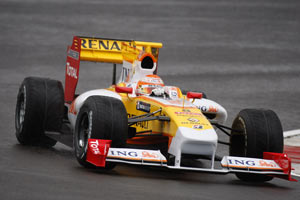kilcoo316 wrote:
Err... well...
I'm not in any way supporting vasia's quite frankly rubbish arguments, but the chines did improve the overall performance of the A-12 in cruise quite significantly.
Err... well... no ---. As I suggested, they're an aerodynamically significant system.
kilcoo316 wrote:
I know what your saying about a LERX - which is essentially what the chines are, and normally, yes, it does induce a helluva lot of drag. But there is usually an exception to every rule - here the Blackbird is it.
No exception here.
vasia suggests the Blackbird's nose is 'slick and rounded' and that this leads to less drag - it's not slick nor rounded, intentionally so, and it's a higher-drag solution than it could have been sans-chines, again intentionally. Just like a race car: there's more to aerodynamic performance than drag alone, even at Mach 3+ (particularly so for the Blackbird given typical missions... like generating decent lift at 80,000+ft where air's a bit thin.) Experimenting with chines gave rise to an aerodynamic solution that gave the Blackbird (for the time) unusually good handling qualities for a plane with its capabilities. As you allude, this solution has been used many times to a general aerodynamic advantage.
But let's not confuse an improvement in 'aerodynamic performance' with 'less drag', which is what vasia is suggesting.
They're far from the same thing.
The Blackbird's chines incurred a drag penalty - no question nor exception about it - but generated useful lift and stability improvements without which the same design would not fulfil its design brief (as you correctly suggest, cruise in particular). They're one of two standout aerodynamic systems on that plane (and having seen a Blackbird first hand, they're more complex than they look in photos - truly anything but 'slick and rounded'). Again, I agree/suggested earlier that there's improvements in overall aerodynamic performance, but vasia's suggestion that these improvements are based on minimal drag is totally stupid - I'm sure you'll agree.
As is vasia's insistence that any (incredibly minor, if that) differences in form drag about different nose designs explains performance differentials between race cars with ultimately similar cross-sectional areas. Unless they're top speed or mileage marathon racers, significant differences in downforce - not minor differences in drag - are the problem.
As a good example (vasia, not you kilcoo316): what's likely to be more advantageous to an F1 car - a 5% reduction in drag, or a 5% increase in downforce? (You've got no clue if you honestly think it's the drag reduction.)
Which brings us back to the same point: if vasia can tie the nose design to a difference in
downforce, vasia has a conversation worth having.
At the moment it's just an ill-founded insistence, and the SR-71 analogy is plainly incorrect.
PS kilcoo316: calling it an A-12 - dead giveaway you're an aero freak, your cover is blown

.






